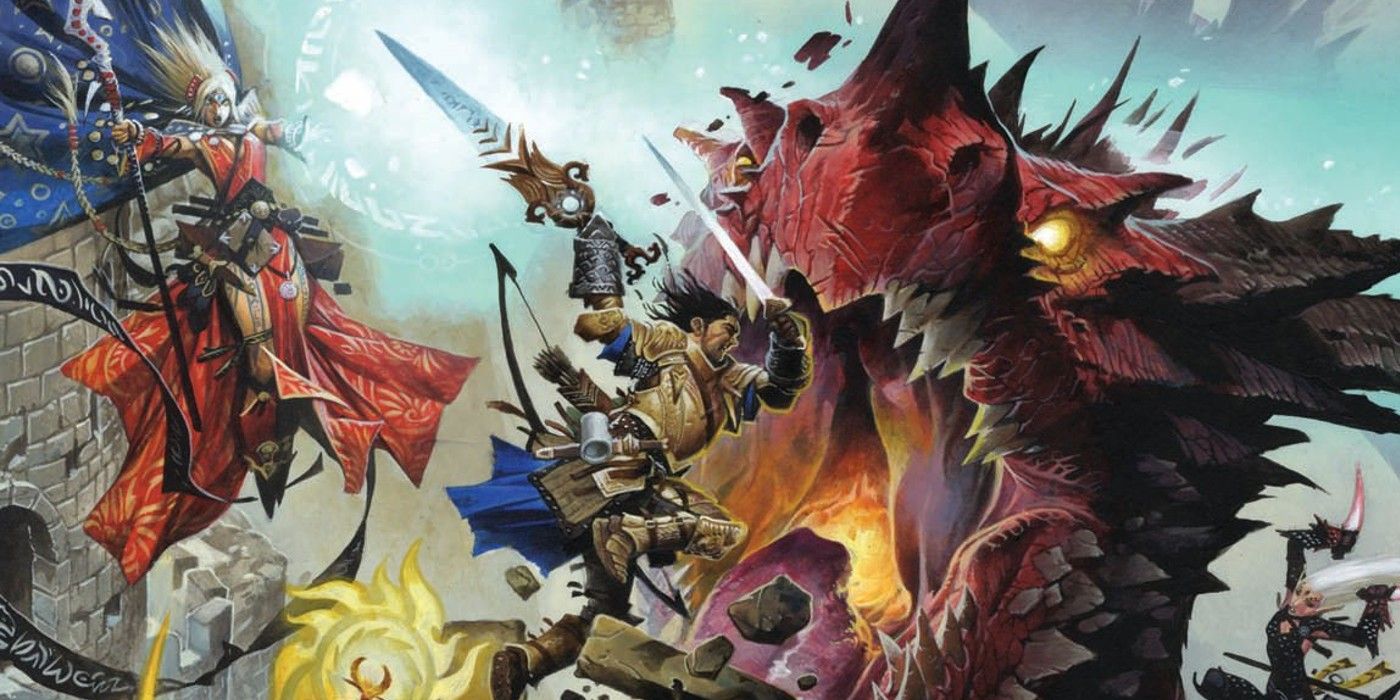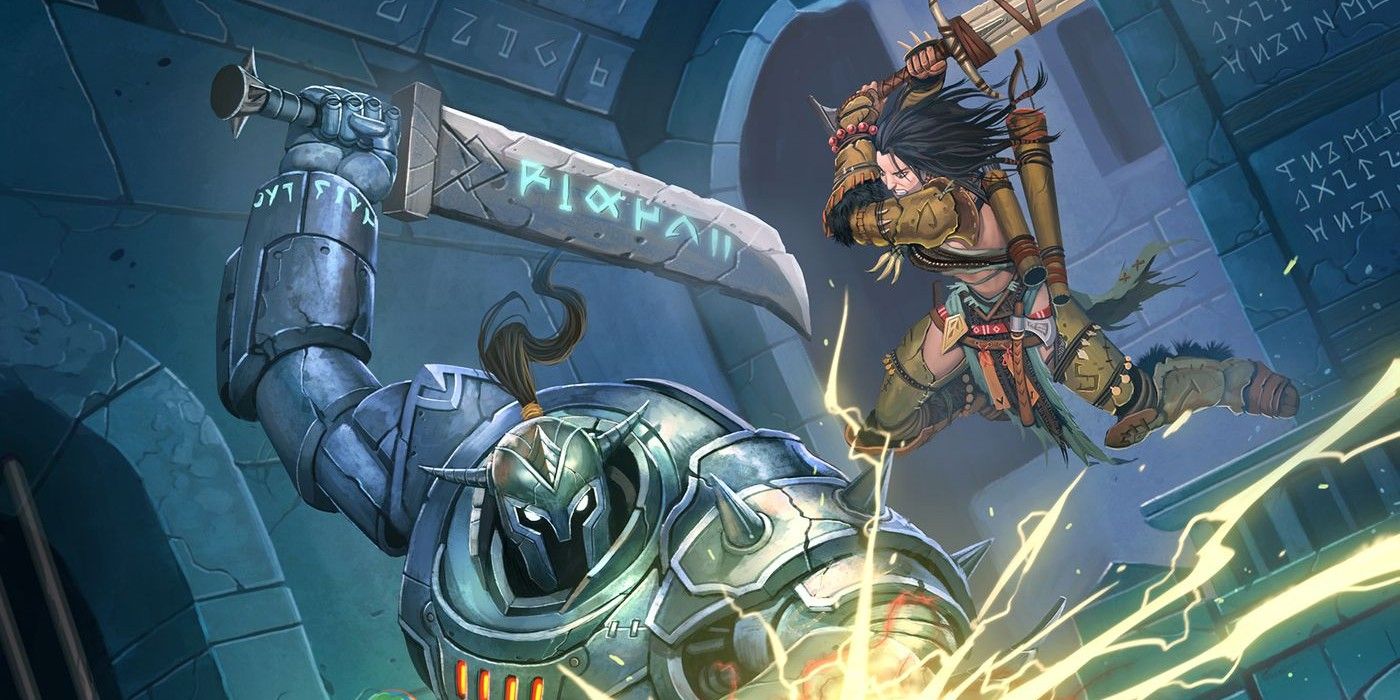
The recent video game adaptation of the Pathfinder tabletop RPG, Wrath of the Righteous, included a new rule system not available in the prior Pathfinder video game, Kingmaker, with the introduction of Mythic Paths. This system made its debut in tabletop form with the 2013 Pathfinder supplement titled Mythic Adventures. The Mythic system was Pathfinder’s answer to Dungeons & Dragons’ Epic rules, and it provided numerous options to create uniquely powerful characters, especially for veterans who were familiar with the existing Pathfinder rules. The Pathfinder Mythic rules set themselves apart from every edition of D&D in approaching epic content, however, by making Mythic Tiers accessible by characters of any level, not only those at level 20, and using advancement-based on story milestones rather than experience points.
While it is debatable whether Pathfinder (first edition) outdid D&D with its Mythic Rules, it is hard to argue that they are relevant to more campaigns, simply because they are not locked behind the level 20 mark that few campaigns reach. Third edition D&D, which formed the basis for Pathfinder, originally had an Epic Level Handbook which provided rules for how classes and prestige classes worked beyond their normal maximum levels. It also included epic-level magic items, spells, and rules options for legendary characters. Fourth edition D&D was the most inclusive of Epic content, including a 30-level span in the core rules, instead of a separate rules supplement. The last 10 levels of 4e D&D were the Epic tier, and the powers and abilities gained therein tended dwarf powers gained at lower levels, while still operating on the same basic rule mechanics.
The current 5th edition of D&D features Epic Boons as its answer to the Epic levels of prior iterations. Epic Books provide benefits similar to a Feat, although typically more powerful, and when using experience points (instead of milestones) should accumulate fairly quickly for level 20 D&D characters. This provides a method for characters to continue advancement, without actually extending the level cap. There were some conceptual similarities between 5e D&D Epic Boons and Pathfinder first edition's handling of similar content via Mythic Rules, but Mythic paths remain distinctive for offering access at any character level. The majority of campaigns do not extend to level 20 and beyond, meaning D&D’s Epic rules are unlikely to see much use, where a Game Master could make any campaign feel more legendary by including Mythic Tiers in a Pathfinder campaign.

In Pathfinder, Mythic Paths are unlocked through Mythic Trials, a narrative-based system associated with “grand achievements within the story rather than individual encounters,” and separate from experience points and character level advancement. This essentially meant the GM was free to come up with an in-game story explanation for the party’s Mythic Ascension. Mythic Adventures contained suggested plot devices like an artifact that grants a character Mythic power, the work of fate, or that a party member is descended from a god, among others. Mythic games did not have to be high-level, therefore, but were suggested to include larger-than-life intensity and stakes, allowing a GM to make any game feel like an epic. The rules also included Mythic Monsters, which could provide more challenge to a party than their non-mythic counterparts.
Pathfinder’s Mythic Tiers covered 10 levels, and since they were not connected with character levels, it was just as possible to have a Level 18/Mythic 1 character as a Level 5/Mythic 10 character. Players selected a Mythic Path from broad archetypes like Trickster and Guardian, gaining Mythic Power Points that could be used to add to d20 rolls, take an extra Standard Action, and more. Characters would also gain Mythic Feats, which significantly enhanced the power of basic Pathfinder: Wrath of the Righteous Feats. A few Mythic abilities, or a single Mythic Feat, could significantly impact the way even low-level characters operated.
There were arguably issues with balance, as some Mythic Feat and ability choices were clearly better than others, but the system succeeded by providing ways to make a campaign feel meaningful, without all of the complications added by high-level characters and encounters. Mythic rules could, alternatively, be used just as D&D’s Epic rules have over the years, providing a means of advancement when characters reach the level cap of 20, but Pathfinder’s approach was more about allowing any game to feel meaningful, making the “stuff of legend” part of the journey, not just the endgame. This allowed players to enjoy some abilities that felt epic throughout the course of a campaign, instead of during what can feel like a “victory lap,” as many games wind down at the level cap.

Though the recent Pathfinder video game is a very faithful adaptation of the tabletop RPG, including complex rules like attacks of opportunity, War of the Righteous does offer different Mythic Paths from the archetypes included in the Mythic Adventures book. Though Trickster is included in both, War of the Righteous' other Mythic Paths are more closely tied in with the origin of the Mythic energies, like Gold Dragon and Lich, in lieu of broader archetypes like Champion and Archmage. Though the video game does not aim for a one-to-one match with tabletop Mythic rules, many of the same optimal build choices from the tabletop Pathfinder translate well to War of the Righteous, like Mythic Vital Strike enabling a martial character to deal a Full Attack’s worth of damage as a single Standard Action.
Wizards of the Coast is working on a D&D 5e revision, but Epic content is not prioritized in D&D 5.5, with no plans for any products focusing specifically on high-level games. This means Dungeons & Dragons players can expect the Epic Boon system to remain the standard for handling Epic content in 5e, and that adventures will continue to focus on the journey to level 20, not where the characters go from there.
Pathfinder first edition’s Mythic system provided a unique way to bring an epic atmosphere to any adventure, regardless of character level. It certainly made characters more powerful, and more resilient, than non-mythic characters of the same level. This required a bit of encounter balancing on the part of the GM, as Epic Tiers did not equate with character levels, but did make for more powerful parties. It opened the door to Pathfinder games that could include more challenge for the players, and feel like epics, without adding in all the complexities inherent to level 20 characters and high-level monsters.
from ScreenRant - Feed https://ift.tt/3CrpwFv
via IFTTT
No comments:
Post a Comment